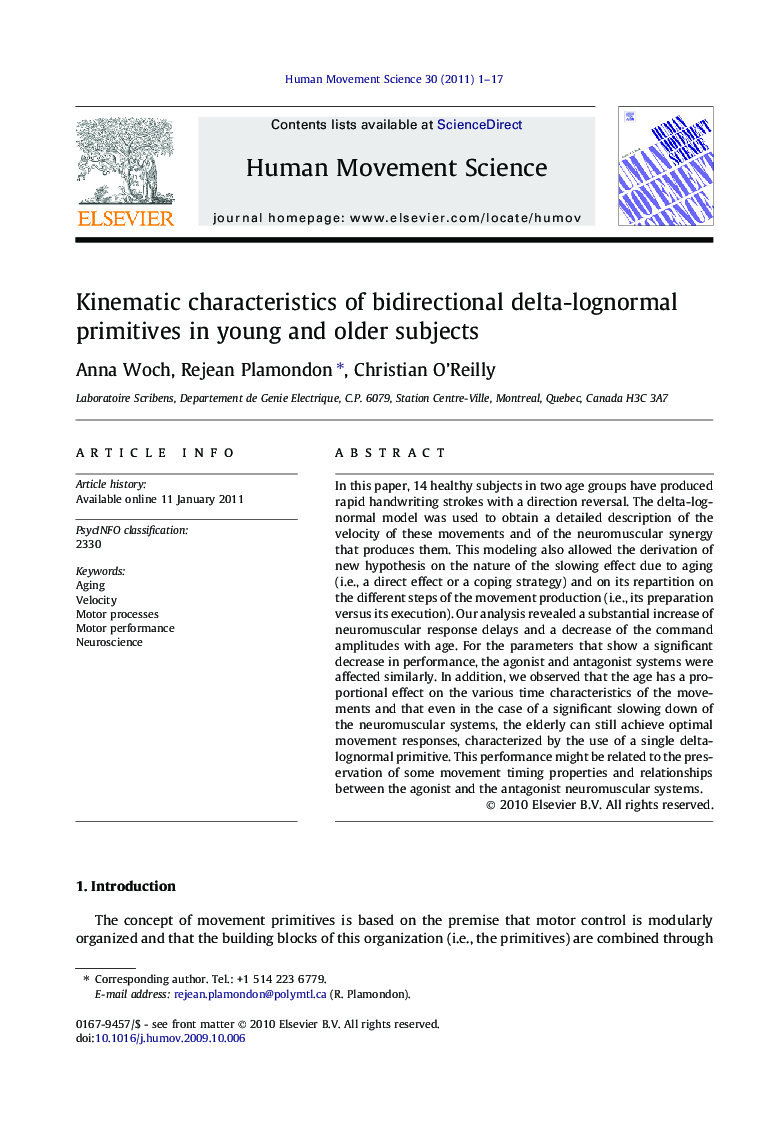| Article ID | Journal | Published Year | Pages | File Type |
|---|---|---|---|---|
| 928666 | Human Movement Science | 2011 | 17 Pages |
In this paper, 14 healthy subjects in two age groups have produced rapid handwriting strokes with a direction reversal. The delta-lognormal model was used to obtain a detailed description of the velocity of these movements and of the neuromuscular synergy that produces them. This modeling also allowed the derivation of new hypothesis on the nature of the slowing effect due to aging (i.e., a direct effect or a coping strategy) and on its repartition on the different steps of the movement production (i.e., its preparation versus its execution). Our analysis revealed a substantial increase of neuromuscular response delays and a decrease of the command amplitudes with age. For the parameters that show a significant decrease in performance, the agonist and antagonist systems were affected similarly. In addition, we observed that the age has a proportional effect on the various time characteristics of the movements and that even in the case of a significant slowing down of the neuromuscular systems, the elderly can still achieve optimal movement responses, characterized by the use of a single delta-lognormal primitive. This performance might be related to the preservation of some movement timing properties and relationships between the agonist and the antagonist neuromuscular systems.
